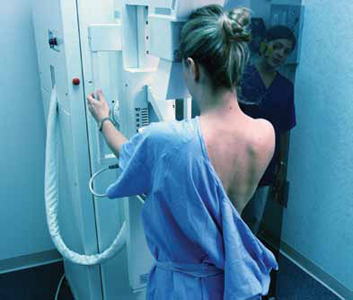Women with ER-positive breast Ca may soon extend tamoxifen therapy to 10 years
To reduce deaths from cancer, screening should achieve two goals:
- It should lead to earlier detection of tumors likely to be fatal
- It should lead to better outcomes after treatment of these tumors.
In other words, effective screening increases the incidence of cancers identified at an early stage (when they have a better prognosis) as it reduces the incidence of malignancies detected at a late stage.
This study found that although screening does indeed increase the rate of detection of early-stage cancers, it reduces the diagnosis of late-stage malignancies only marginally.
Details of the trial
Using SEER data from 1976 through 2008, Bleyer and Welch looked for trends in the incidence of breast cancer—both early-stage malignancies (ductal carcinoma in situ and localized disease) and late-stage disease (regional and distant cancers)—among women aged 40 years or older. They also calculated the baseline incidence of breast cancer before screening using data from 1973, the first year that the rate of breast cancer was recorded. Because the incidence of breast cancer that year was “almost certainly spuriously low,” they also incorporated data from 1974 and 1975, when the rate of breast cancer was higher than average following the diagnosis of breast cancer in First Lady Betty Ford.
Bleyer and Welch also took measures to adjust for the higher incidence of breast cancer associated with the use of menopausal hormone therapy. To do so, they estimated the current incidence of breast cancer using data from 2006 through 2008, and they adjusted data for each year that the rate of breast cancer exceeded that figure from 1990 through 2005.
From 1976 through 2008, the rate of detection of early-stage disease more than doubled, increasing from 112 to 234 cancers per 100,000 women, while the detection of late-stage disease incrementally decreased, from 102 to 94 cancers per 100,000 women. Assuming a “constant underlying disease burden,” Bleyer and Welch estimated that only eight of the 122 additional early-stage cancers identified through screening were destined to progress to advanced disease. That means that 114 excess cases of breast cancer were detected per 100,000 women.
The number of women affected by overdiagnosis: an estimated 1.3 million, including more than 70,000 women in 2008 alone.
During the 30 years covered by this study, breast cancer deaths declined 28% among women aged 40 years and older (a population in which screening mammography was prevalent); among women younger than age 40 (a population in which screening was not prevalent), breast cancer mortality declined 42%. These declines are thought to be the result, largely, of advances in treatment.

Harms versus benefits of early detection
There is no question that screening mammography saves lives by promoting early diagnosis of breast cancer. However, as I stated above, the decline in breast cancer deaths identified in this study may be attributable more to improvements in treatment than to early diagnosis of breast cancer. This study also suggests that the benefits of screening mammography are overshadowed by the harms (including unnecessary diagnostic imaging, biopsies, surgery, chemotherapy, and radiation therapy) associated with overdiagnosis. From this perspective, a screening strategy for average-risk women in which mammography is initiated later, and is performed less frequently, would appear prudent. Accordingly, rather than adhere to guidelines from ACOG and other groups that recommend that screening be initiated earlier and performed annually, it makes more sense in average-risk women to follow the 2009 guidelines from the US Preventive Services Task Force, which recommend:
- biennial screening mammography for women aged 50 to 74 years
- biennial screening mammography before the age of 50 years only if, after counseling about the potential benefits and risks, the patient chooses this option.1
How these findings compare with other data
Three studies shed light on the efficacy of screening mammography in other populations. In an investigation from Norway, Kalager and colleagues examined the breast cancer mortality rate in four groups of women:
- those who lived in counties where screening mammography was performed during the years 1996 through 2005
- those who lived in counties where screening mammography was not performed (1996–2005)
- two historical comparison groups (1986–1995) that mirrored the first two groups.2
Their analysis of 40,075 women with breast cancer suggested that one-third of the reduction in breast cancer deaths during the time periods studied was the direct result of screening, whereas the bulk of the observed reduction in breast cancer mortality was attributed to greater breast cancer awareness, improved diagnostic (as opposed to screening) techniques, and enhancements in treatment.


